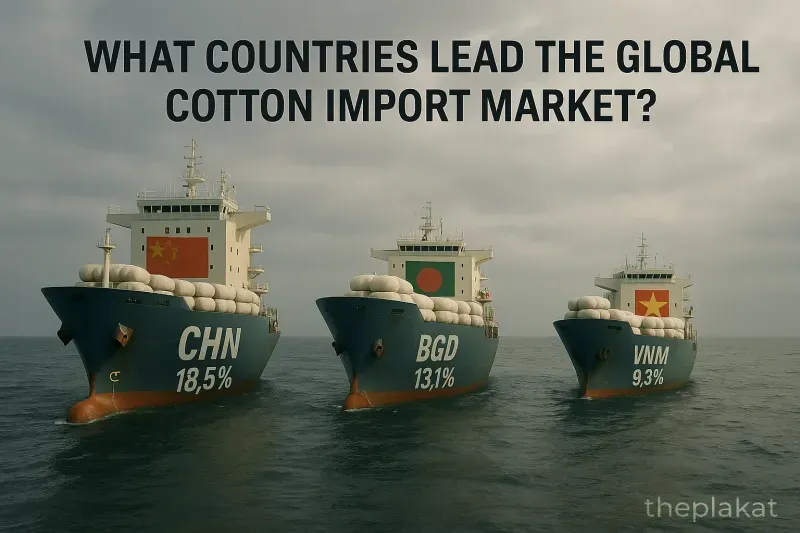Published
in Economy
In the ever-evolving landscape of international trade, cotton remains a staple resource with significant import activities. As of 2023, specific countries have emerged as influential importers, showcasing their dominance in this sector.
Cotton is a vital material utilized globally, primarily for textile production. Its significance is not just confined to clothing but extends to other industrial applications, including medical supplies and paper products. In 2023, the dynamics of cotton imports have shifted, highlighting various countries as key players in the market.
Leading the global market is China, which holds an impressive 18.53% share of cotton imports. Bangladesh follows with 13.12%, reflecting its robust garment industry. Vietnam, Turkey, and Indonesia also play substantial roles, emphasizing their strategic positions in textile manufacturing.
The considerable import percentages by these countries underline the significant demand for cotton, fueled primarily by the thriving textile industries in these regions. While these top importers dominate the scene, many other nations contribute smaller shares, cumulatively impacting the global figures. This is referred to as 'the rest,' representing less than 1% each but together indicating a diverse and widespread import pattern.
Despite the dominance of a few, the broader distribution of imports among various countries points to a resilient global market. Economic complexities, such as trade policies and domestic production capabilities, influence these patterns. The Economic Complexity Index (ECI) further provides insights into each country's trade dynamics, reflecting industrial diversity and specialization.

The Economic Complexity Index (ECI) measures the knowledge intensity of an economy by considering the complexity of the products it exports. It reflects the range and sophistication of capabilities present in a country's economy.
Cotton is crucial for global trade since it is used extensively in the textile industry for clothing, household items, and numerous industrial products. Its broad applications make it a vital import for many countries with strong manufacturing sectors.
In 2023, China is the largest importer of cotton, accounting for 18.53% of the global cotton imports, largely driven by its expansive textile industry.